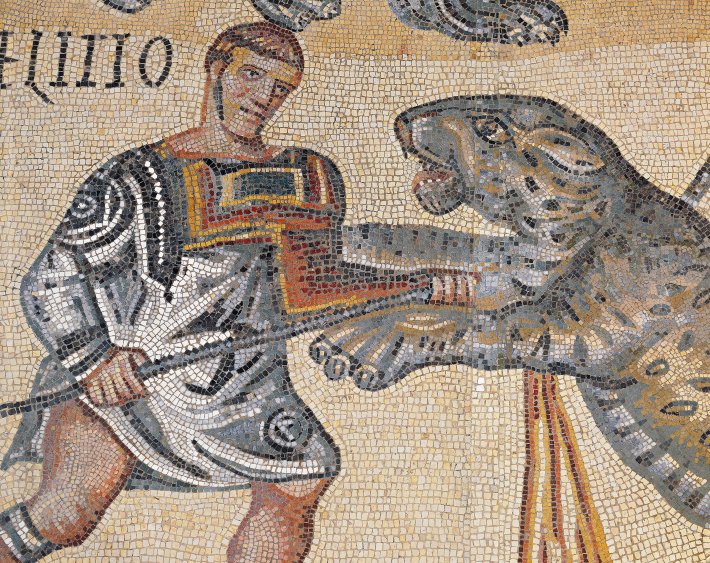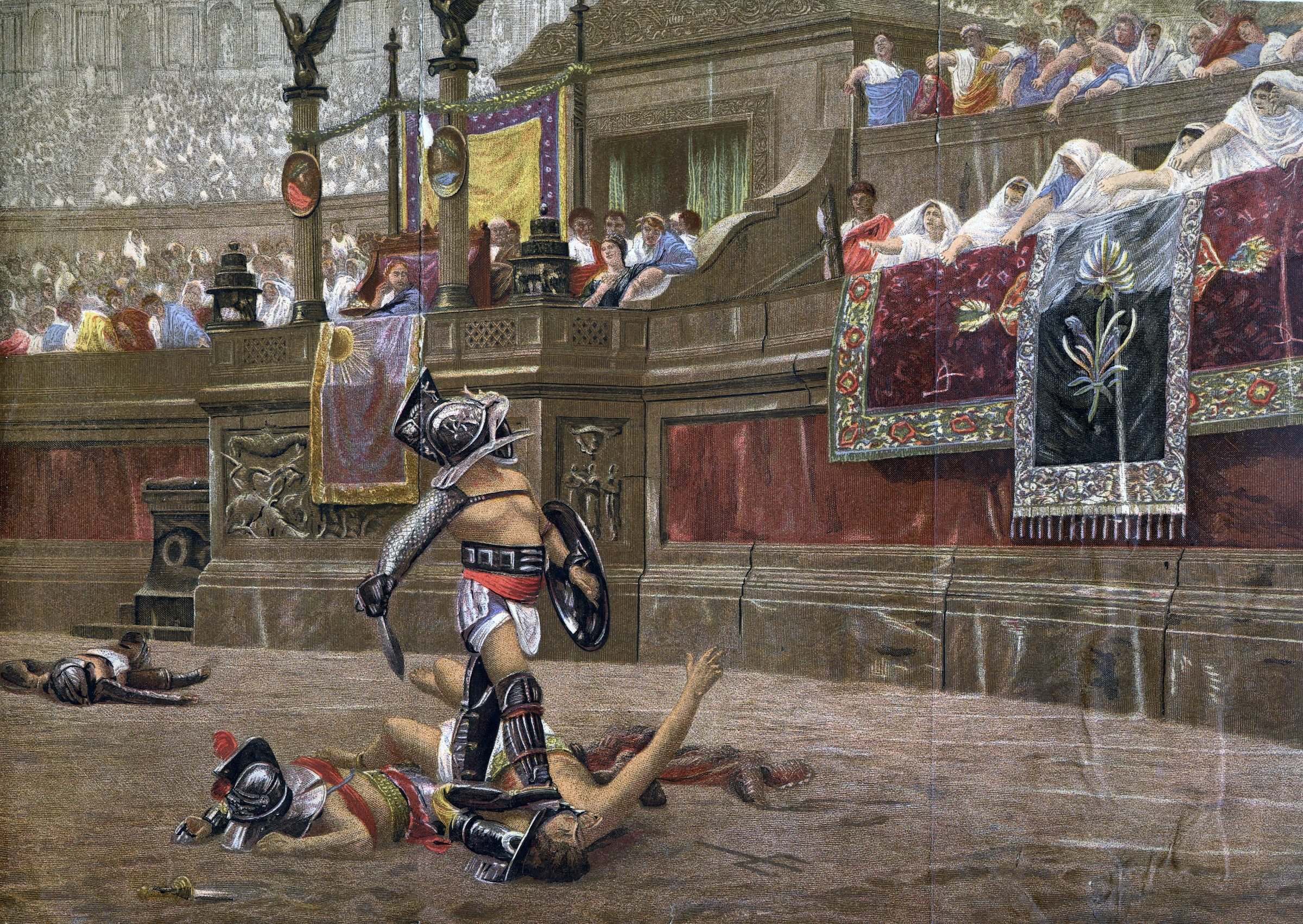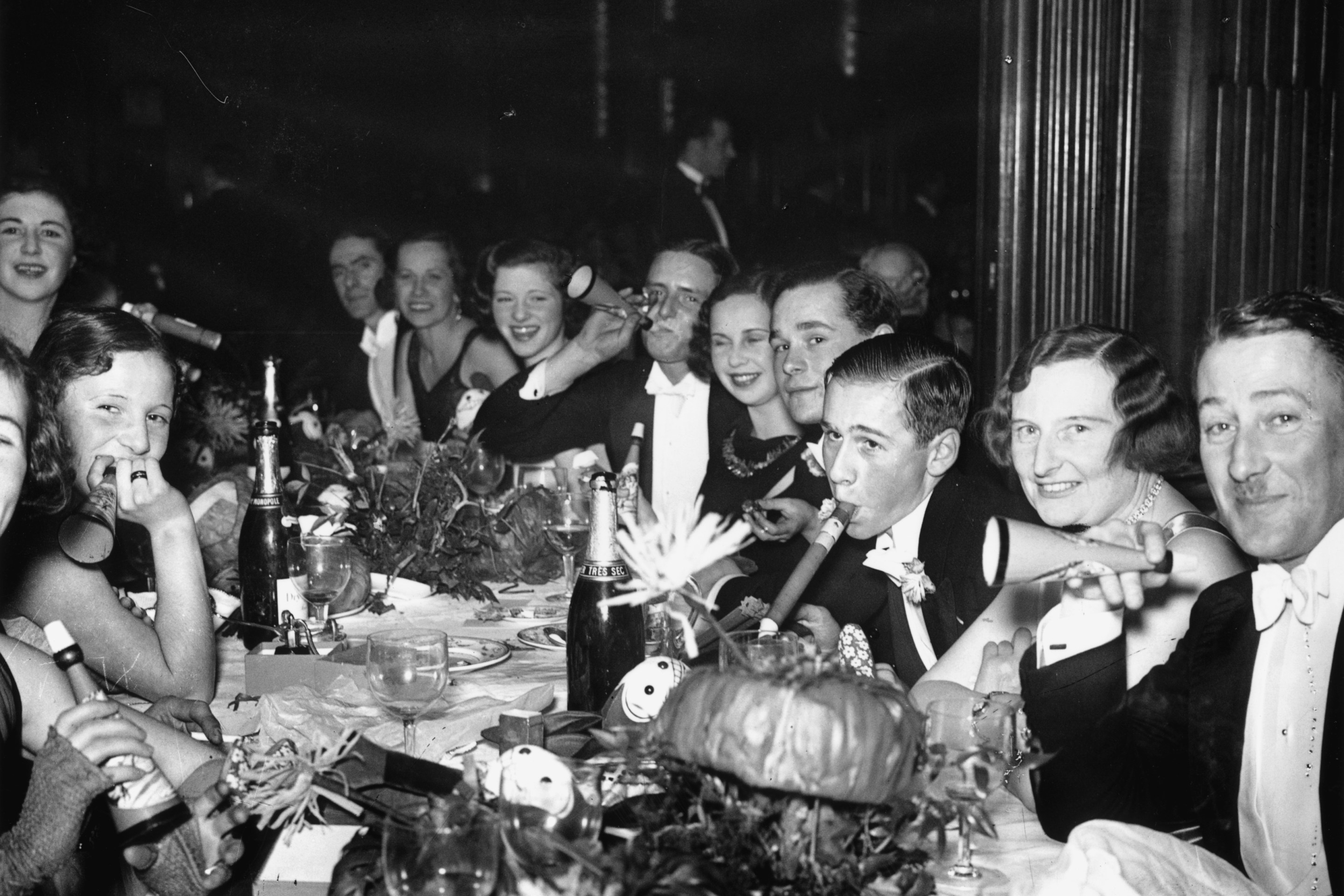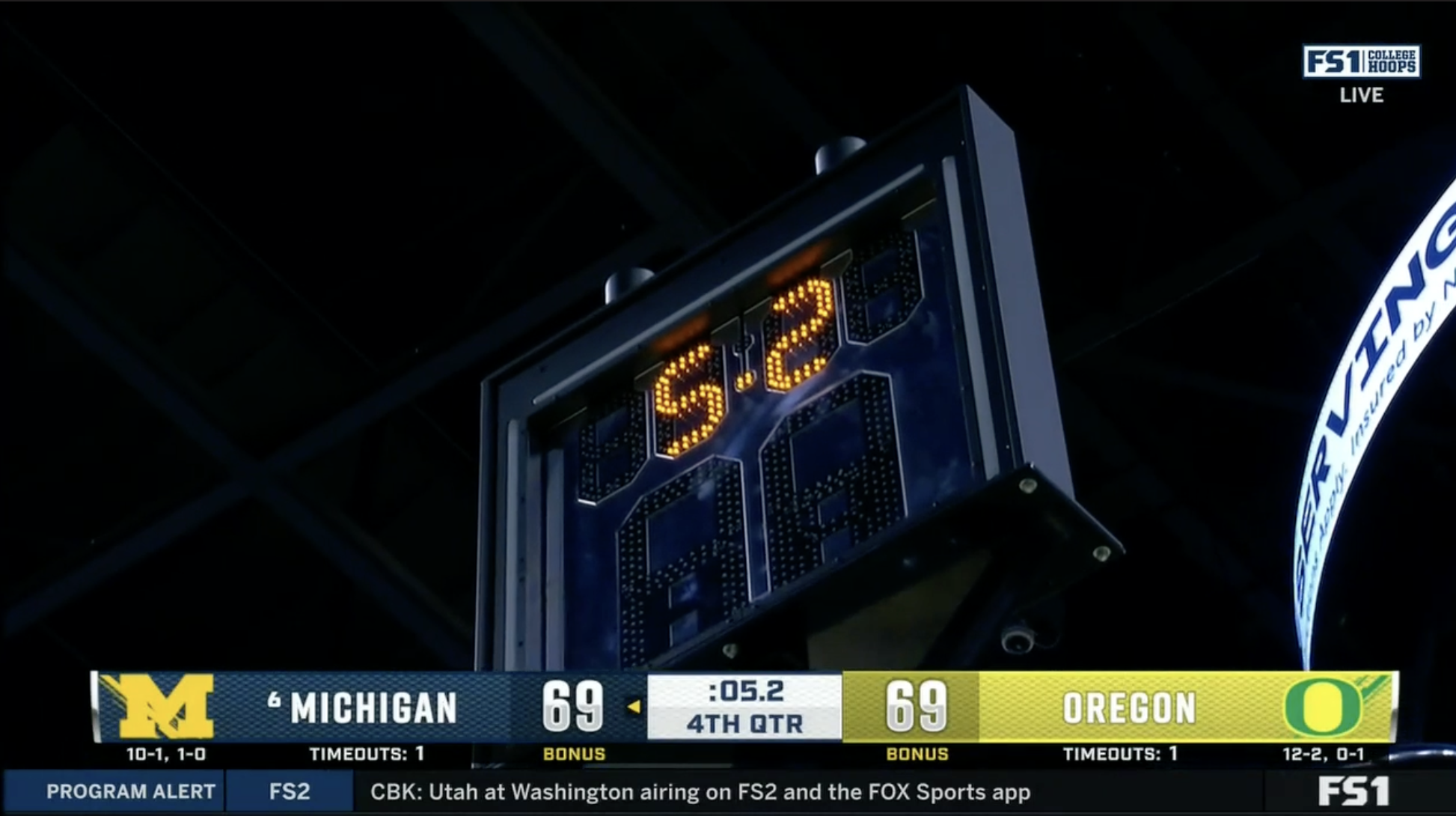In honor of today's release of the major motion picture and guaranteed box office smash Wicked, here is my non-exhaustive ranking of the types of gladiator.
I. Murmillones
The kings of the arena. Armed with a short sword, protected by a shield and a bracer on his sword arm, and decked out in an extravagant, often fish-themed helmet, there's a reason you think of the murmillo when you think of gladiators: They look fucking awesome. Because of the combined weight of the upper-body gear, murmillones were usually the tallest, strongest gladiators, and they were rock stars—some may even have done product endorsements.
The ubiquitous 1872 painting Pollice Verso, above, illustrates a victorious murmillo (though we do not actually know if a thumbs up/thumbs down decided a defeated man's fate; it may have been thumb extended/closed fist), as does this graffiti in Pompeii, not discovered until 2019. The graffiti depicts Marcus Attilius, a freeborn gladiator who likely entered the arena to discharge his debt. In his first fight, he defeated the chosen champion of the emperor Nero, Hilarus, who had 13 victories to his name. In his second fight, portrayed in the graffiti, he whomped the legendary Lucius Raecius Felix, who was 12-0 coming in (Felix was granted his freedom following this fight). We don't know any more about Marcus Attilius after that, so it's unclear whether he had more of a Kevin Durant career or a Greg Oden one.
II. Retiarii
Probably the most annoying guy to fight against. A retiarius was armed with a trident and a weighted net, and was routinely pitted against more heavily armed and armored gladiators in a clash of styles. The bulkier fighter would try to end the fight quickly, before the weight of their equipment wore them down, and advance aggressively. The more mobile retiarii, on the other hand, would either dance away, gradually wearing out his opponent, or try to capture them in his net. I bet getting netted then poked to death sucked ass.
Roman fans hated these guys, because they shied away from contact like a reverse James Harden. They were assigned the worst barracks, and Juvenal tells us that an exaggerated version of the retiarius served as comic relief in the arena, showing increasingly cartoonish cowardice as they fled their opponents.
This portrayal feels unfair. Retiarii, unique among gladiators with minimal armor and no defensive equipment, had to be incredibly talented to stay alive, and their fights were clashes of style that spruced up the usual card of big bruisers trading haymakers. They faced another handicap: Because they were targets of the crowds' opprobrium, they were often not given a second chance. A third-century A.D. mosaic depicts the retiarius Kalendio surrendering to Astyanax, even after successfully tangling the secutor in his net. The null symbol next to his name indicates that Kalendio was not granted mercy and was put to death for his loss.

III. Dimachaeri
All gas, no brakes. A dimachaerus fought with two short swords, usually curved. Basically a character from a fighting game. They had to be ambidextrous and generally fought with minimal protection, against a more heavily armored opponent. A lot of different gladiator classes sprung up in the Late Empire, many of them little more than novelties, but the dimachaerus showed the most staying power.
IV. Samnites
Sports has always been political. After Rome defeated their neighbor Samnium in war, samnites quickly popped up in the arena—a hated enemy, now humbled and fought for entertainment (think Sergeant Slaughter becoming an Iraqi sympathizer during the Gulf War). But, by the rise of the Empire, Samnium had come to be fully integrated into Roman society, so samnites were phased out of the arena, to be replaced by a more relevant and recent defeated people, the Greek-coded hoplomachi. A hoplomachus gladiator was in all respects nearly identical to a samnis—it was just that the latter were no longer considered foreigners, and so it was not as much fun to cheer for their deaths.
Samnites were the glue guys of the gladiator arena. Armed with a short sword and a rectangular shield, and armored only on their forward (left) leg and sword (right) arm, they were highly popular with fans during the Republic, and set the template for variations and embellishments in later centuries. Not flashy, all business, they remain what you likely picture when you picture a gladiator.

V. Essedarii
The Romans loved a spectacle. On occasion, a retiarius would be matched against two opponents, and the net-fighter would be perched atop a platform meant to mimic a hill that his opponents would have to scale to reach him, while he chucked rocks at them. Similarly, essedarii were there to put on a show. Riding a horse-drawn chariot with a separate driver so he could focus on the fight, an essedarius, meant to evoke the cavalry of the recently conquered Britons, would throw spears at his opponent, who was on foot, or try to ride him down.
I'm ranking essedarii this highly due to one anecdote: Suetonius (a massive hater) relays to us that the emperor Caligula, frustrated at the huge ovation given to an essedarius for giving his enslaved chariot driver his freedom after a victory, got so flustered that he stepped on and tripped over his own toga. "The people that rule the world give more honor to a gladiator for a trifling act than to their deified emperors," Caligula fumed.
VI. Secutores
Another evolution of the samnis, a secutor carried a short sword and a shield, and was often pitted against more nimble foes. Two of the most famous gladiators were secutores. One was Flamma, a second-century A.D. Syrian who put up a career record of 34-4-9. His losses were so impressive that he was granted a reprieve after each. Four separate times he was awarded a rudius, a symbolic wooden baton that also conferred manumission; all four times, he declined it to remain a gladiator and a slave. He died at age 30, an old age for a gladiator; his tombstone was found in Sicily.
The second was the emperor Commodus, who ruled from 177 to 192 A.D., and was the (very loose) inspiration for Joaquin Phoenix's villain in the first Gladiator. The Historia Augusta, of unknown authorship, claims that the real-life Commodus fought as a secutor, going undefeated in 735 fights. Even if that number is exaggerrated, I imagine they were not fair fights. To Commodus's credit, he never had a defeated opponent killed. Still, competing in the arena was seen as below the dignity of an emperor, and after Commodus was assassinated, and the senate's decree of damnatio memoriae made it illegal to mention his name, Romans would simply refer to Commodus as "the gladiator."
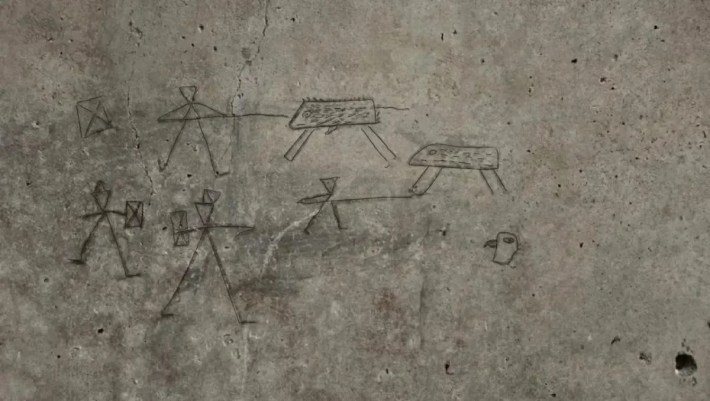
VII. Parmularii
VIII. Scutarii
Categories of gladiator rather than specific types, a parmularius carried a small shield while a scutarius carried a larger one. Parmularii are better, obviously, because buddy, I'm not here for defense. It's 100 degrees, I've already drank half an amphora of Falernum, I could only afford standing room tickets up here in the maenianum summum—I didn't come to watch the Big Ten of bloodsport.
IX. Caestus
A unique gladiator class, caestus were unarmored and unarmed except for leather hand wraps that were fitted with studs or, more rarely, spikes—basically a deathmatch with brass knuckles. Caestus were based on ancient Greek boxers, perhaps specifically on Theagenes, subject of a hero cult at the time caestus first appeared in the arena. Theagenes won gold in boxing at the Olympics of 480 BC, and gold in pankration (basically MMA) in 476. He is probably one of the only Olympians who, we are told, "killed most of his opponents."
X. Sagittarii
Horse-mounted archers. These were not fair fights. I guess watching a sagittarius put some arrows in some poor sap might've broken up the tedium of a full gladiatorial card, which could last all day. But if I wanted to see horses, I would have gone to the damn Circus Maximus!
XI. Laquearii
Carried a lasso and a sword. Temu-ass retiarii.
XII. Getting run over by a quadriga
DCCXXXIX. Bestiarii
Fought animals. Thumbs down.
